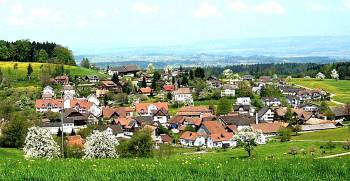Note: Swiss author Peter Stamm was SHORTLISTED for the Man Booker International Prize in 2013, and in 2014 he was WINNER of the Friederich Holderlin Prize in Germany.
“Thomas could hear nothing but the scraping of his soles on the gravelly ground and his breathing which had adapted to his stride pattern. He felt suddenly present as never before; it was as though he had no past and no future. There was only this day and this path on which he was slowly making his way up the mountain.”
 Swiss author Peter Stamm has made a career out of writing short novels in which characters who seem ordinary on the surface become more intriguing – and sometimes more self-aware – as they try to control change or learn to live with it. Some of his characters are damaged while others are simply out of tune with themselves – lacking self-awareness and often oblivious to what is happening around them. Most of these characters must learn to deal with relationships, especially those involving romance, and Stamm often uses dual points of view to convey two different opinions about a relationship and the characters involved in it. This novel is no exception, except in the nature of the couple which is the focus. Here the two main characters, Thomas and Astrid, are older than the characters in the earlier novels – in their thirties as the novel opens and in their sixties when it closes. At the outset, they have been married for a decade or so and have two young school-age children. Having just returned from a five-week family vacation in Spain, they are tired from all the traveling and the need to open up the house and get settled again. They have quieted the children in bed and have begun the usual domestic activities, with Astrid sorting and washing laundry, and Thomas sitting outside on a bench with Astrid’s empty wine glass sitting beside his full one, as he contemplates getting up the next morning to go to work.
Swiss author Peter Stamm has made a career out of writing short novels in which characters who seem ordinary on the surface become more intriguing – and sometimes more self-aware – as they try to control change or learn to live with it. Some of his characters are damaged while others are simply out of tune with themselves – lacking self-awareness and often oblivious to what is happening around them. Most of these characters must learn to deal with relationships, especially those involving romance, and Stamm often uses dual points of view to convey two different opinions about a relationship and the characters involved in it. This novel is no exception, except in the nature of the couple which is the focus. Here the two main characters, Thomas and Astrid, are older than the characters in the earlier novels – in their thirties as the novel opens and in their sixties when it closes. At the outset, they have been married for a decade or so and have two young school-age children. Having just returned from a five-week family vacation in Spain, they are tired from all the traveling and the need to open up the house and get settled again. They have quieted the children in bed and have begun the usual domestic activities, with Astrid sorting and washing laundry, and Thomas sitting outside on a bench with Astrid’s empty wine glass sitting beside his full one, as he contemplates getting up the next morning to go to work.
Walking back to go inside the house, Thomas almost gets there, but he “hesitated momentarily, then, with a bewildered smile that he was only half aware of, he turned away to the garden gate…lifted the gate as he opened it, so that it didn’t squeak…and, slowly and self-consciously, walked down the road….Even though he was stone cold sober, he had a sense of moving like a drunk, slowly and self-consciously.” Astrid has gone to bed and does not notice his absence until the next morning. She is so confused that she waits more than two days before calling the police to say that Thomas is missing, telling white lies, in the meantime, to his secretary and to the children. During this time, Thomas has been walking through the mountains in eastern Switzerland, heading west, avoiding roads and places near his home as he travels, a decision he has made so quickly that he has not even brought camping equipment or heavy clothing for the cold temperatures in the mountains.

Braunau, Switzerland, where Thomas made a credit card purchase which alerted the police. Photo by Nouly.
The novel moves forward with each character describing his/her life in detail from the moment Thomas has left: Astrid does the ironing and fixes meals. “She had always been the voice of reason in the relationship and in the family.” Thomas makes his way through the mountains to a small village where he uses his credit card, a mistake which stimulates the interest of the police.

Trekking in the mountains without winter clothing, Thomas learns to protect himself as he heads west.
Stamm takes many chances with this novel. His characters are completely ordinary and lacking in self-awareness, and the reader is not able to share experiences with them. They “stand off” on their own, apart from the world at large, protecting themselves. Even the crises they face here do not seem to provide great moments which show their developing consciousness or feelings for those around them. Astrid goes on with her life and her new “job” of taking care of the family. Thomas travels through the mountains from town to town, always being careful not to be noticed, while picking up odd jobs to support himself when he needs money. Author Stamm also extends the time frame of the action in which these characters operate. Since they themselves, and especially Astrid, provide little intrigue for the reader in terms of their thoughts and observations about the world and their lives, the reader is left to watch them for many more years as they continue to do what they have already been doing. Astrid is organized and predictable, despite her husband’s absence. Thomas, whom we never get to know well, goes to new places, meets people, gets jobs, and leaves when he feels like it, moving on to new places and new countries. Eventually thirty years pass.

A snow grouse, or ptarmigan, was responsible for an emergency for Thomas. Photo by Jan Frode Haugseth
As always, Stamm is precise and clear with his prose and his story line, though he provides little intimacy between the reader and the characters. Emphasizing the themes more than character, the author’s conclusion takes place when Thomas and Astrid are in their mid-sixties. This provides an opportunity for the reader to observe them at this late stage of their lives, along with the lives of their children, brought up with no input from their father for most of their existence. Have Astrid and Thomas learned anything? What, if anything, should they have learned? Are they happy? Have they lived lives which are rewarding to them? What do they owe their families, if anything, and how much true freedom can a person expect in twenty-first century life? Where does love fit into the picture, and what does one do if the person who is loved is unhappy with that love? What does it mean to be responsible? And what do we owe ourselves? All these questions find their resolutions in a surprise conclusion. The reader’s own answers to these questions will determine whether or not s/he finds the surprises realistic – and satisfying.
ALSO by Peter Stamm, reviewed here: SEVEN YEARS, AGNES, ALL DAYS ARE NIGHT
Photos, in order: The author photo by Robert Ramos appears on http://www.elperiodico.com
Braunau, Switzerland, where Thomas made a credit card purchase which alerted the police. Photo by Nouly. https://commons.wikimedia.org
Trekking in the mountains alone and without winter clothing, Thomas learns to protect himself as he heads west. https://www.shutterstock.com
A snow grouse, or ptarmigan, was responsible for an emergency for Thomas. Photo by Jan Frode Haugseth. https://commons.wikimedia.org

